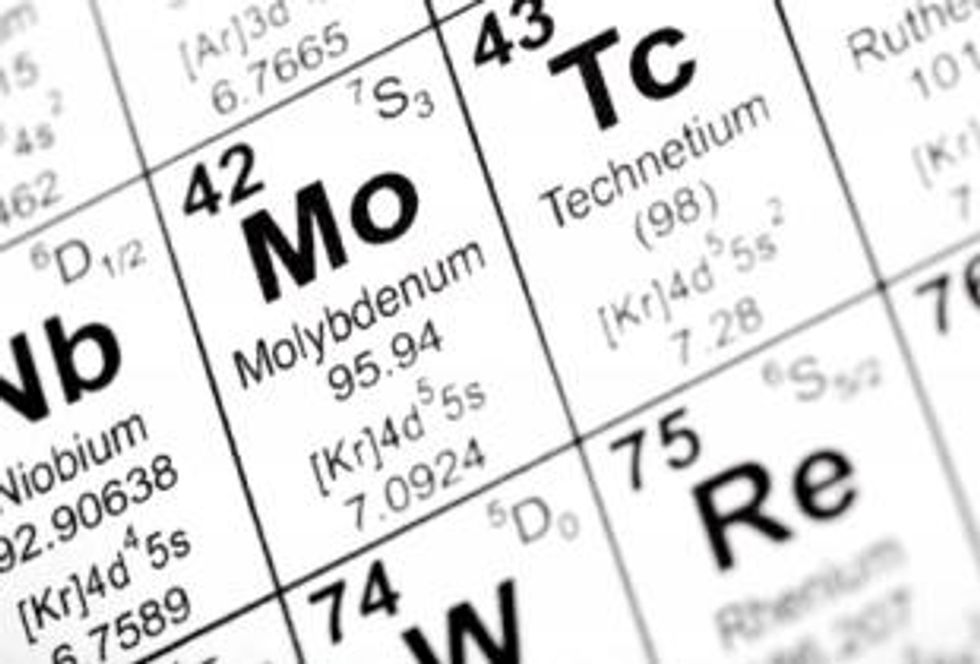Ken MacDonald Vice President of Business Strategy and CFO Erdene Resource Development discussed the factors controlling the current molybdenum market.
By Michael Montgomery—Exclusive to Moly Investing News
Molybdenum has seen a rebound since the 2008 global economic crisis sent prices crashing from over $30 per pound down to $8 lows. In China, the price for molybdenum oxide is approximately $16.50 per pound, however, on the LME, the price has weakened since the start of the year, down to $35,200 per tonne. The fall in price on the LME is largely attributed to the struggling economic data in the US and Europe that is affecting many base metals.Despite the weaker LME price, a few analysts have forecasted that the moly market will be in surplus for 2011. A sentiment that has not kept many major molybdenum producers from increasing production on their deposits, or opening new mines. Both Thompson Creek (NYSE:TC)(TSX:TCM) and Mercator Minerals (TSX:ML) have announced an increase of molybdenum on their deposits. Freeport McMoRan Copper and Gold (NYSE:FCX) is moving ahead with plans to re-open its ‘Climax” molybdenum mine in Colorado capable of producing 30 million pounds of moly per year. This new mine is one of many world class deposits slated to open in the near term.
In an Exclusive interview with Moly Investing News, Ken MacDonald, Vice President of Business Strategy and CFO of Erdene Resource Development (TSX:ERD), discussed the factors controlling the molybdenum market.
While a surplus of moly in 2011 may be a factor keeping prices at bay, the long term projections for steel demand around the globe have increased demand projections for molybdenum going forward. “All of the projections we are seeing are indicating that molybdenum consumption is around the 400 million pound range, increasing by 2020 by 300 million pounds. The CRU group and CMP have come out with similar forecasts,” stated MacDonald.
The dramatic increase in demand predicted by 2020 will have to be met by western producers of the metal. “That means that there will have to be one to two world class moly mines coming into production in each of the next 8-9 years to meet demand,” stated MacDonald, adding, “This is being driven by the steel markets, and the fairly robust forecasts for steel.”
Over the past few years steel production has been dominated China. The rapid urbanization and increase in automotive demand in the country has been the catalyst for the yearly double digit growth in steel production. Consequently, the demand for moly to be used for the strengthening of steel alloys has risen alongside steel production.
“China produces upwards of half the world steel output. Based on the interest we’ve had from the Chinese, they are looking to secure molybdenum, as is evident with Hanlong Mining Investment’s funding of Moly Mines and General Moly. This tells me that Chinese firms perceive a shortage of moly in the long term,” stated MacDonald.
The Hanlong Mining Investment Group has spent over $1 billion to fund the projects of General Moly (AMEX:GMO)(TSX:GMO) in the US, and Moly Mines (ASX:MOL) in Australia. The Chinese firm may be concerned with the low grade moly deposits in China. Chinese moly producers are simply having to spend more capital for dwindling supply.
Recently, the National Development and Reform Commission (NDRC) of China encouraged firms to import molybdenum and antimony ores to satiate domestic demand. “China, the world’s top producer of molybdenum and antimony, is struggling with low grade ores. To preserve local ores, Beijing has set yearly quotas for mining production of the two metals,” stated the NDRC. The lack of domestic supply of molybdenum is most likely the main factor in the aggressive actions of the Hanlong Group.
“The outlook for long term demand for moly in China will not be met by any new production coming on stream in China,” added MacDonald.
While the price of moly has not met the expectations of growth in 2011, the price is remaining relatively stable. The reduced production form China over the next few years should be a positive factor for western moly mining firms. The increase in demand for the metal stemming from steel production and new emerging markets for the metal should lend support to molybdenum’s price going in the long term.
